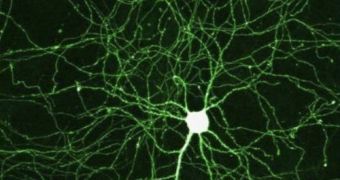The quest to construct computers that emulate the way the human mind works has been going on for quite some time now. However, progress has been slow due to the sheer complexity of the cortex, which is capable of many great feats, associations and recollections, at the same time. Now, scientists have taken an important step forward, with the creation of a new transistor, that is capable of functioning in very much the same way a synapse does between two human nerve cells (neurons).
This means that experts in the electronics industry could soon be able to produce more efficient computers, that could become capable to “thinking” like humans do. They will most certainly not emulate the complexity of our brains, but their physical structure will be somewhat different. French scientists at the Institute of Electronics, Microelectronics and Nanotechnology say that the goal of their work is to construct circuit components at the nanoscale. This will allow them to use the devices inside computers whose design has been inspired by human neurons.
According to Dominique Vuillaume, a physicist at the Institute and the author of the new study, such a generation of computers will be more suitable and far more efficient at running complex problems. This doesn't mean that they will exceed supercomputers in terms of processing power, but rather that they will become better able to perform processes humans have perfected to an art, such as recognizing places, faces, and other such details in their environments. The expert believes that the new transistors he and his team developed are an instrumental tool in achieving this.
Generally, these devices act like small switches, allowing current to pass through, or blocking it, and also amplifying the signal when this needs to be done. Previous attempts at mimicking the plasticity of synapses – which modifies its traits within milliseconds – have been attempted in networks, but seven transistors were needed to perform the task of one synapse. The new device, called the nanoparticle organic memory field-effect transistor (NOMFET) is capable of doing all that on its own.
The researchers write in a recent issue of the esteemed journal Advanced Functional Materials that their next study will focus on binding more of these NOMFET transistors to each other. The group will then analyze how closely this setup mimics the activity going on inside synapses, LiveScience reports.

 14 DAY TRIAL //
14 DAY TRIAL //